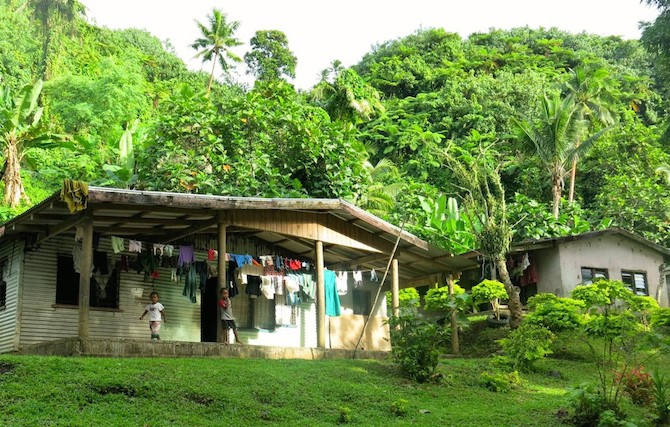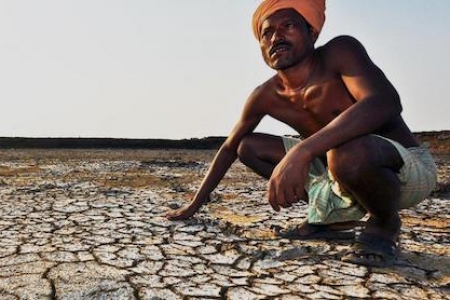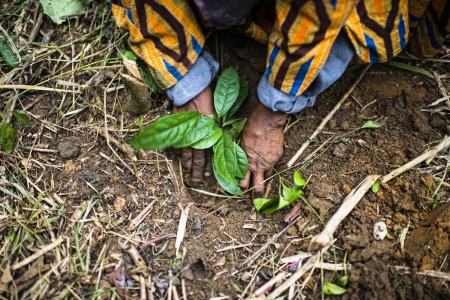This post was originally published on the Landscapes for People, Food and Nature Blog. This post is part of an online discussion on large-scale land interventions that runs through December 14, 2014. Can these initiatives fulfill their promises? Read more here and comment below or send an 800 word response to a(dot)waldorf(at)cgiar(dot)org.
When we talk about large-scale landscape initiatives, one of the biggest risks is losing out on the detail. How do we continue to take into account the intricate dynamics between people and nature as we go bigger and bigger?
Many large-scale initiatives can be quite top-down, while most people living in a landscape see things more locally and focus on aspects directly relevant to them. There are advantages to both approaches, but how can we develop strategies that bring together the two scales?

Better understanding resilience
For several years now, Bioversity International has been working with the Satoyama Initiative to better understand the resilience of communities and their landscapes. How does the community use and manage their natural resources? What biodiversity do they depend on, both wild and agricultural? What kind of governance and support mechanisms exist to deal with change?
Using a set of 20 indicators that we developed to better understand the local context, we work with communities to develop action plans to improve resilience. Communities draft out next steps, assign leaders to each action point and identify the external support needed to make these plans happen.
Download the Toolkit for Indicators of Resilience here.
So far, with the help of partners, this exercise has been done in 25 sites across 5 major ecosystems around the world. But to give an example, we’ll present Taveuni Island in Fiji, which is quite interesting because the communities here occupy and heavily depend on both land and seascapes.
Co-existing with the top-down policies of a nature reserve
Taveuni is home to the 15,000-hectare Bouma National Heritage Park, which is managed by the National Trust of Fiji Islands. Four communities of a few hundred people each live in this park. From a top-down perspective, the park has several restricted zones, including the ‘Taveuni Forest Reserve’, which was established to ensure unlimited water supply and free ecosystem services to the people of Taveuni, and the ‘Ravilevu Nature Reserve’, intended to protect the forest and the animals and birds within it.
No tourist activities, fishing, cutting or cultivation are allowed to take place in nature reserves in Fiji. The rest of the land as well as the coastal fishing grounds are owned directly by the indigenous communities.
The park hosts the highest peaks of the island: at over 1000m, these mountains are an important source of fresh water, running through the forests and into the ocean whose fish and reefs provide a source of food, income and coastal protection.
By comparison, only a small part of the sea is under protection. There is a small Marine Protected Area (Tabu area) that was established in 1998 through an agreement between community resource owners with the technical support of the FLMMA network (Fiji Locally Managed Marine Area). The New Zealand Agency for International Development (NZAID) also started a programme of community-based ecotourism projects in each of the four villages in 1990.
Although several development interventions of different scales are going on, there was consensus that while communities themselves are united, communication between the four villages is not happening. Village chiefs, who hold most of the decision-making power, rarely talk to each other or collectively decide on resource management.
One idea that community members had, was to work together to create a larger Marine Protected Area that would include tabu (no-take) areas within the fishing grounds of each village, thereby amplifying the spill-over effects of marine protection which are now only benefitting one community. There was also a desire to revive collective farming practices (balebale) within each village, which traditionally helped pass down knowledge from generation to generation.
If grassroots solutions miss the big picture
These are solutions and actions suggested from the ground up that could contribute to larger-scale efforts. But is it enough and how could they be linked better? Maybe the opportunities lie in actions where there is less incentive to change at the local level.
For example, women, who fish closer to the shore, depend on a plant root known as duva. The roots of the plant are pounded and the toxic juice squeezed out while submersed in the water, practically killing everything on the reef irrespective of size. It is a quick and convenient way to catch fish, but one of the most deadly methods used.
Increasing commercialization also means that men are catching bigger and bigger amounts of fish to sell (the irony being that many buy canned fish to eat and sell the fresh fish which is more expensive). Would linking to more top-down large-scale initiative make sense in these cases?
Mitigating measures for climate change impacts could also be an opportunity for larger-scale interventions. Taveuni is currently experiencing higher levels of precipitation, stronger typhoons and coastal erosion. The higher levels of fresh water entering the ocean are actually threatening the health of the coral reefs, which are very sensitive to changes in water temperature and salinity.
In a way, the community-based eco-tourism projects that were introduced in the 1990s were an attempt to manage a large area more locally. But while most community members agree that these projects now benefit them immensely, this was not always the case.
Western concepts of conservation, bookkeeping, money management and taxes took a long time to become naturalized and each community has their own set up rather than something collective. There might not be anything inherently wrong with that. But, at the same time, one piece of strong feedback from our workshops was that communities were pleased to, for once, look at their living system as a whole, rather than as the compartmentalized elements that are usually the focus of external agencies, such as biodiversity conservation, climate change mitigation and infrastructure development.
But external support is important and necessary. Linking external resources to local plans might be one way to satisfy both local needs and more large-scale goals. In fact, the National Trust of the Fiji Islands invited us to do the exercise with the four villages and were an active part of the workshop and strategy development process. Communities also managed to identify other local NGOs and government departments that would be key stakeholders in helping them carry out their resilience strategies.
So maybe with a little support and working together from the design stage, we can bridge the gap between the top down and the ground up?
Read more about the Resilience Indicator Toolkit and download the full toolkit here.













Add new comment